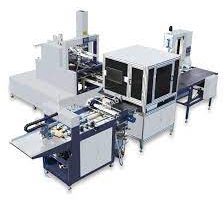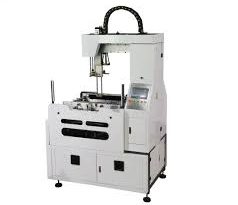What is Die-Cutting Machinery? Precision Cutting for Diverse Industries
Die-cutting machinery is an essential component of the manufacturing sector, known for its precision and versatility in cutting materials into specific shapes and sizes. Utilized across a wide array of industries, from packaging to electronics, die-cutting machines streamline production processes by delivering high-precision cuts at high speeds. This article delves into the workings, benefits, and applications of die-cutting machinery.
Definition and Functionality of Die-Cutting Machinery
Die-cutting machinery uses sharp steel blades, formed into specific patterns, known as dies, to cut materials. These machines operate under pressure, applying a die onto the material to create precise cuts that match the die’s design. There are several types of die-cutting machines, including rotary die cutters, flatbed die cutters, and laser die cutters, each suited to different materials and scale requirements.
Technological Features
Modern die-cutting machines incorporate advanced features to enhance their efficiency and adaptability:
- Automated Material Handling: Feeds materials automatically into the machine, increasing throughput and reducing manual labor.
- Precision Cutting Technology: Achieves high accuracy through precise blade movements, essential for detailed designs and tight tolerances.
- Quick Setup and Changeover: Advanced machinery allows for rapid changes in die setups, facilitating short production runs of customized products.
Operational Benefits
Implementing die-cutting machinery in manufacturing operations offers several advantages:
- Increased Productivity: High-speed cutting capabilities enable mass production within short time frames.
- Consistency and Accuracy: Ensures every piece is cut identically, critical for assembly processes and quality control.
- Material Efficiency: Reduces waste by maximizing the number of pieces cut from a single material sheet.
Applications Across Industries
Die-cutting machinery serves a critical role in numerous sectors:
- Packaging: Creates custom packaging solutions for products, enhancing protection and shelf appeal.
- Automotive: Cuts gaskets, seals, and interior trim parts, which require high precision for proper fit and function.
- Electronics: Used for cutting insulating materials and flexible circuits, integral to device assembly.
- Textiles: Cuts fabrics into specific shapes for apparel and industrial applications.
Future Trends
The future of die-cutting machinery is likely to see further integration with digital technology and automation:
- Enhanced Automation: Increased use of robotic systems and AI to improve precision and speed, reducing human intervention.
- Sustainability Focus: Greater emphasis on reducing energy consumption and using environmentally friendly materials.
- Hybrid Systems: Incorporation of laser cutting alongside traditional die-cutting for even greater flexibility and material compatibility.
Conclusion
Die-cutting machinery is a pivotal tool in modern manufacturing, offering precision, efficiency, and adaptability across various industries. As technological advancements continue, these machines will become even more integral to manufacturing processes, pushing the boundaries of what can be achieved in material cutting and design.



